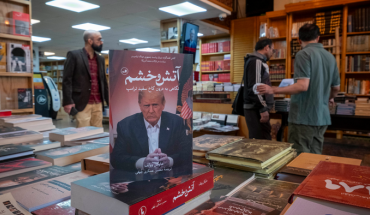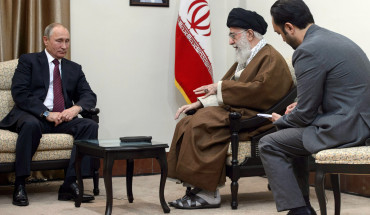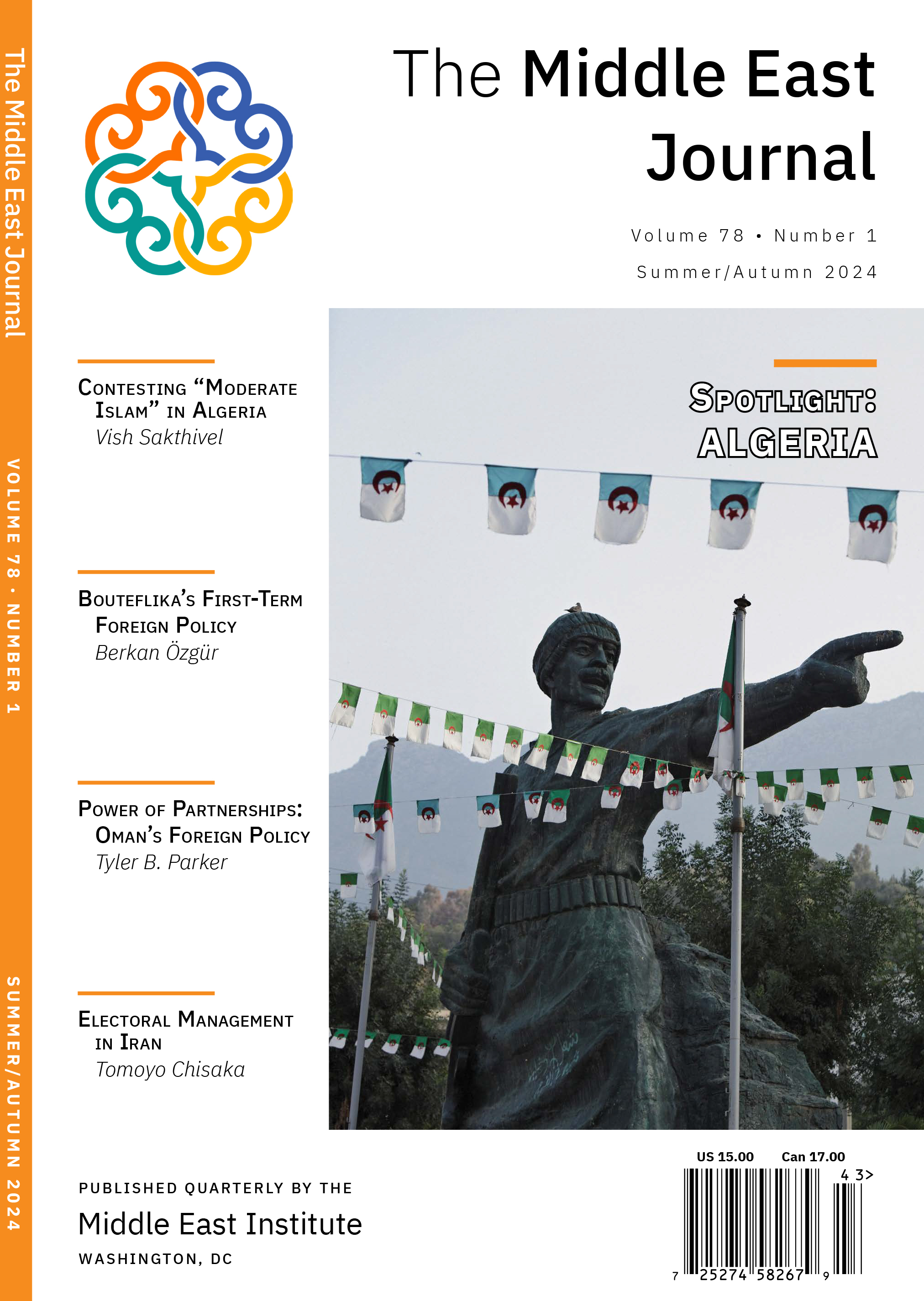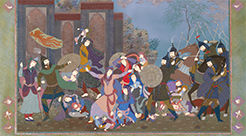*A longer version of this article was first published in Volume 11 of Current Trends in Islamist Ideology.
At a time of unprecedented popular unrest in Arab states of the Middle East, Iran's Supreme Leader Ayatollah Ali Khamenei stated in a February 21, 2011 speech that two simple remedies are required to solve the problems that afflict the contemporary Islamic World. According to Khamenei, "unity among Muslim [states]" and "the weakening of America" are the two necessary steps that all Muslims must take to secure a "bright" future for the umma or the worldwide Muslim Nation.
Indeed, Iranian officials routinely claim that the "unification of the ranks of Muslims against the enemies of Islam...has been one of the most important goals of the Islamic Republic of Iran." In recent years, however, the Islamic Republic's efforts to extend its message of Islamic solidarity have increased markedly. In 2008 -- a year that was officially declared the "Year of Islamic Unity" in Iran -- the organizers of the annual Islamic unity conference in Tehran published a charter and a set of guiding principles that outline the spirit of Islamic cooperation to which Tehran aspires. The document goes into specific detail about ways bring an end to sectarian divisions in the Muslim nation. For example, it urges Muslims from different sects to avoid "name-calling and declaring each other as unbelievers" and further adds that "ascribing innovation to other Muslims must be avoided."
For all its sloganeering about vahdat, or pan-Islamic unity, much of the drive behind Tehran's pan-Islamic outreach is first and foremost political, and it is undertaken with a view toward enhancing Iran's geopolitical position. This occurs in the context of the Iranian regime's ambitions to become the leader of the Islamic World, a goal hindered by the Persian and Shia characteristics of the Islamic Republic.
In the Iranian understanding of the realities of the Middle East and the Islamic World, no state is more determined to undermine Tehran's goals and delegitimize its Islamist credentials than Saudi Arabia. Countering the House of Saud and the legitimacy the religious Wahhabi establishment gives to the monarchy's rule have become top priorities for Iranian foreign policy.
Claims that Wahhabism is a foreign-made conspiracy against the Muslim Nation are not limited to fringe elements among the Iranian Shia clergy. Senior Shia figures regularly and strongly condemn all things Wahhabi and depict the sect as "contemptible" and deliberately "planted" in the midst of the umma by the West to create a rift among Muslims. At their core, such denunciations by Iranian clergy are in fact a reaction to the anti-Shia positions of the Wahhabi establishment, which has included the issuing of anti-Shia fatwas or insulting Shia clergy such as Iraq's Grand Ayatollah Ali Sistani. But Iranian anti-Wahhabism also clearly reflects the rivalries between Tehran and Riyadh as they seek to advance their competing interests among various Muslim populations in the Middle East and beyond.
Indeed, Iran’s anti-Wahabbism stems as much from the diametrical positions that Tehran and Riyadh hold regarding most regional political competitions, such as their support for opposing parties (e.g., Hamas versus Fatah or Hezbollah versus the "March 14" movement in Lebanon), as from its stated ideal of Islamic unity. But the gap between the Shia hierocracy and the Wahhabi leadership is also due to fundamental differences of a religious nature between Shiism and Wahhabi teachings. As a consequence, Iranian officials have focused their efforts to present Wahhabism as an aberration to the rest of the Sunni world and to maintain that genuine reconciliation with Sunnis is both desired and possible.
There can be little doubt that these Iranian efforts to present Shiism in a favorable light to Sunnis are spurred on by the important linkages and alliances that Tehran has formed with Islamist movements that are rooted in Sunnism such as Palestinian Hamas, elements of the Egyptian Muslim Brotherhood, and Turkey's ruling AKP. Since the beginning of 2011, Tehran's outreach has also been driven by the popular unrest that has swept through the Arab world on an unprecedented scale. Tehran views this unrest as an opportunity to work through its Sunni allies to further extend its influence among Sunni Arabs.
In propagating its message of Islamic unity and anti-Western struggle, Iran has consistently sought to avoid issuing any statements that might be interpreted as sectarian, as this could be counterproductive to its larger agenda. However, this policy position has been severely tested since mid-March 2011, when the ruling Sunni Khalifa government of Bahrain, backed by the Saudi Arabian military, began a crackdown against mainly Shia protesters. Iranian discourse began to openly express sympathies along sectarian lines but without taking on a stridently anti-Sunni tone. However, Iran's anti-Saudi and anti-Wahhabi message has remained as strong as ever, and Tehran has accused Riyadh of pursuing a bloody crackdown against the Bahraini Shia.
Meanwhile, a top Iranian priority in this information operation has been to assert that the Saudi military's deployment to Bahrain began only after Washington's consent had been secured. This has been meant to underscore Iran's larger claims that a Saudi-American axis operates throughout the region to defend the interests of extra-regional powers and at the expense of repressed local Muslim populations.
From the moment the Tunisian Revolution toppled President Zine El Abidine Ben Ali, rejuvenated Iranian public relations efforts aimed at reaching out to the Muslim Brotherhood, particularly in Egypt, were set in motion. Shaykh Yusuf al-Qaradawi, arguably the most influential Muslim Brother, was hailed as a praiseworthy revolutionary while the likes of Mohammad El Baradei and Omar Suleiman were repudiated as Western lackeys.
Despite its initial enthusiasm for Qaradawi during the Egyptian Revolution, Tehran was soon taken aback by the Egyptian cleric's position on the Bahraini protests. After Qaradawi purportedly urged a crackdown on the mainly Shia protesters in Bahrain, he was mildly denounced by Iranian officials for holding "discriminatory" viewpoints. The episode again demonstrates that Iranian officials have conveniently misjudged the strength of anti-Shia sentiments that exist even among mainstream (non-Wahabbi) Sunni personalities.
Iran's brisk support for the Muslim Brotherhood and its careful efforts to minimize any sectarian tensions reflect the view from Tehran that the Middle East is a historic crossroads and that Iran can be a major beneficiary of this regional power transformation so long as it does not let its adversaries cast the state as predominantly Persian or Shia power. Accordingly, Tehran has pursued a campaign of emphasizing pan-Islamic values while downplaying sectarian differences and presented American policies in the region as essentially "anti-Islamic."
This basic anti-American message aimed at the wider Islamic world has been propagated by the Islamic Republic since 1979. Thus far, it has had limited traction with the majority of Arab governments. This is largely because Washington remains a critical strategic partner for most states in the Middle East. Tehran understands that its weak cross-sectarian and pan-Islamist record and credentials must be coupled with an anti-Americanism message in order for its regional renewal policy to be persuasive, at least amongst those Arab states experiencing turbulence and where power outcomes are still to be decided.
Assertions and opinions in this Policy Insight are solely those of the above-mentioned author(s) and do not necessarily reflect the views of the Middle East Institute, which expressly does not take positions on Middle East policy.
The Middle East Institute (MEI) is an independent, non-partisan, non-for-profit, educational organization. It does not engage in advocacy and its scholars’ opinions are their own. MEI welcomes financial donations, but retains sole editorial control over its work and its publications reflect only the authors’ views. For a listing of MEI donors, please click here.













